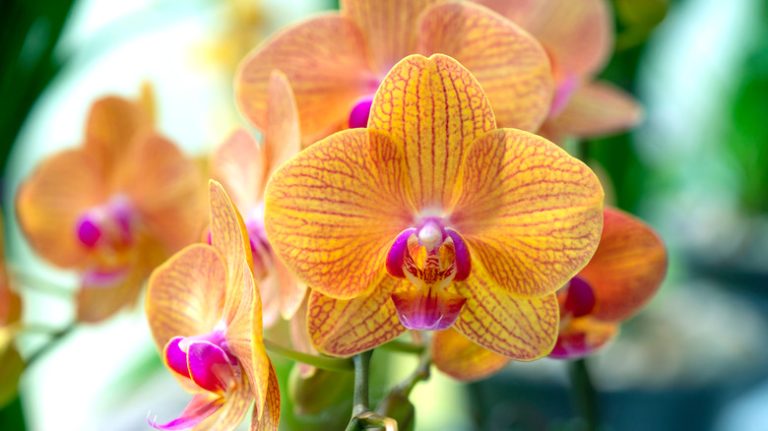The African Marigold, scientifically known as Tagetes erecta, is a species of flowering plants in the sunflower family Asteraceae. Actually, marigolds are not just one single flower, but a whole group of flowers that belong to the Tagetes genus. There are several different species, including the French Marigold (Tagetes patula), which is shorter and more compact, and the African Marigold, which has tall woody stems and large, aromatic leaves.
Marigolds are easy to grow and are a favorite of many gardeners due to their bright and cheerful blooms. They are native to the Americas, and their specific planting conditions include full sunlight and well-drained soil. They can be grown from seeds, which should be planted after the last frost and can take a few weeks to germinate.
One interesting fact about marigolds is that they do not form true roots like other plants. Instead, they have a modified root system called “taproot” that allows them to grow taller and with more stability. This makes them excellent plants for garden borders or as a backdrop for other flowers.
The African Marigold is known for its large, orangegood flowers and can grow up to 3 feet tall. It is a hybrid of the French Marigold and the African Marigold (Tagetes erecta). The French-African hybrid marigolds are taller than the French Marigolds but shorter than the African Marigolds. They have woody stems and pinnately compound leaves that are alternate.
Marigolds are not only beautiful flowers, but they also have some practical uses in the garden. They are often planted as companion plants to repel insects and other pests, including nematodes and aphids. The leaves of marigolds can also be used to make herbal teas or added to salads for a unique flavor. Additionally, the dried petals of marigold flowers can be used to make an aromatic oil or added to potpourri for a pleasant fragrance.
Caring for African Marigolds is relatively easy. They require regular watering and should be fertilized every few weeks with a balanced fertilizer. Deadheading, or removing the spent flowers, will encourage new blooms to form. African Marigolds are also frost-sensitive, so they should be protected from cold temperatures or brought indoors during the winter months.
In conclusion, African Marigolds are beautiful flowers that are easy to grow and care for. Their bright orange blooms and tall, woody stems make them an excellent addition to any garden. They have specific planting conditions, including full sunlight and well-drained soil, and can be grown from seeds. They have several practical uses, including repelling insects and adding fragrance to the home. Caring for marigolds involves regular watering, fertilizing, and protecting them from frost. Overall, African Marigolds are a great choice for any gardener looking for a vibrant and aromatic flower to brighten up their garden.
Marigold Seeds
African marigolds, scientifically known as Tagetes erecta, are a popular choice among gardeners for their vibrant and long-lasting blooms. To grow African marigolds, you can start with marigold seeds, which are readily available in garden centers and online.
Planting Marigold Seeds
Marigold seeds can be planted directly in the garden after the last frost of the season. Before planting, prepare the soil by removing any weeds and adding organic matter, such as compost or well-rotted manure, to enrich the soil. African marigolds prefer a sunny location with well-drained soil.
The seeds of African marigolds are relatively large and easy to handle. Sow the seeds about an inch apart and cover them with a thin layer of soil. Water the soil gently to keep it moist, but avoid overwatering as it may cause seed rot.
Care and Growing Conditions
African marigolds are easy to grow and require minimal care. They prefer full sun but can tolerate some light shade. These marigolds are especially well-suited for hot and dry climates, as they are drought-tolerant once established.
The plants grow up to 3 feet tall and have woody stems. The leaves of Tagetes erecta are pinnately divided into several lobes and have an alternate arrangement. The stems and leaves are also aromatic when crushed.
While African marigolds are known for their large, yellow flowers, hybrid varieties like the “Crackerjack” can have flowers of various colors, including orange and gold. The flowers are long-lasting and make excellent cut flowers.
It is important to note that some people may be sensitive to marigold sap, which can cause skin irritation. Additionally, marigolds are known to deter some pests, including nematodes, aphids, and mosquitoes, with their strong odor.
Specific Information about Tagetes erecta Seeds
African marigold seeds, also known as French-African marigold seeds, come in a variety of sizes and colors. The seeds are larger than other marigold varieties, allowing for easier handling and sowing.
Tagetes erecta seeds can be sown directly in the garden or started indoors, depending on personal preference and local climate conditions. Indoor seed starting should be done 4-6 weeks before the last expected frost in your area.
When starting seeds indoors, use a well-draining seed starting mix and keep the temperature around 70°F (21°C). Transplant the seedlings outdoors after the danger of frost has passed.
Marigold seeds, when properly cared for, germinate within 5-14 days. However, keep in mind that germination times can vary depending on factors such as temperature and soil moisture.
In conclusion, African marigold seeds are a great choice for any garden. With their bright and aromatic flowers, they can add a splash of color and fragrance to any outdoor space. Whether you choose to sow them directly in the garden or start them indoors, marigolds are a wonderful addition to any gardener’s collection.
African and French-African Hybrid
African marigolds (Tagetes erecta), also known as French marigolds, are annual flowers that are native to Mexico and Central America. They are easy to grow from seeds and are loved by gardeners for their bright and vibrant blooms. African marigolds are tall plants that can reach up to 3 feet in height, while French-African hybrids can grow even taller.
Both African and French-African hybrid marigolds have large, yellow or orange flowers that are excellent for use as cut flowers. The flowers are aromatic and emit a pleasant fragrance, making them a popular choice for bouquets and floral arrangements.
Growing Conditions
African marigolds prefer full sunlight and well-drained soil. They are not frost-tolerant and should be planted after the last frost date has passed. The seeds can be sown directly into the garden or started indoors and then transplanted outside once the weather warms up. It is important to provide them with enough space to grow, as they can become quite large.
Care and Maintenance
Marigolds are relatively low-maintenance plants. They require regular watering, especially during dry periods, but be careful not to overwater as this can lead to root rot. Deadheading the flowers will encourage continuous blooming throughout the growing season. African marigolds do not require fertilization, but adding compost or well-rotted manure to the soil before planting can help improve their growth and flower production.
One specific care tip for growing French-African hybrid marigolds, such as the ‘Crackerjack’ variety, is to pinch back the stems when they are about 6 inches tall. This will encourage the plant to become bushier and produce more flowers.
African marigolds are also known for their insect-repelling properties. The flowers produce a strong scent that deters many common garden pests, including aphids and whiteflies. Some gardeners even recommend planting marigolds as a companion plant in vegetable gardens to help deter pests.
In summary, African and French-African hybrid marigolds are beautiful and fragrant flowers that are easy to grow and care for. They provide excellent information in the garden, and their bright and vibrant flowers can add a pop of color to any landscape. Whether you choose to plant African marigolds or opt for a French-African hybrid, you can enjoy their beauty and benefits all season long.
French
The French African Marigold, scientifically known as Tagetes erecta, is a tall and erect plant that can grow up to several inches in height. These marigolds have large aromatic leaves and produce vibrant yellow flowers that add a pop of color to any garden.
The French African Marigold does well in a variety of conditions and is easy to care for. It can be grown from seeds and requires full sunlight to thrive. The flowers bloom from summer to fall and can attract pollinators to the garden.
One interesting feature of the French African Marigold is its pinnately divided leaves. These leaves are alternate on the stems and give the plant a unique appearance. The marigold also has woody stems and can grow quite tall, making it a standout in any garden.
This marigold is not only known for its beauty, but also for its practical uses. The leaves of the French African Marigold can actually be used to make a natural insect repellent. This makes it an excellent choice for gardeners who want to keep pests away without using harmful chemicals.
Planting
To plant French African Marigolds, start by preparing the soil in your garden. Make sure the soil is well-drained and has good fertility. You can then sow the seeds directly into the soil, about 1 inch deep and spaced about 8 inches apart.
After planting, water the seeds thoroughly and keep the soil moist until the seeds germinate. Once the plants have established themselves, they require moderate watering and can tolerate drought conditions.
Care
The French African Marigold is relatively low maintenance and does not require much care. It is a hardy plant that can tolerate a wide range of temperatures, but it does not do well in frost conditions. If you live in an area with cold winters, it is best to plant the marigolds after the last frost in spring.
| Common Name | Scientific Name | Height |
|---|---|---|
| French African Marigold | Tagetes erecta | Tall |
The French African Marigold is an excellent addition to any garden. Its vibrant yellow flowers and aromatic leaves make it a standout plant. Whether you want to attract pollinators to your garden or keep pests away, the French African Marigold is a great choice.




